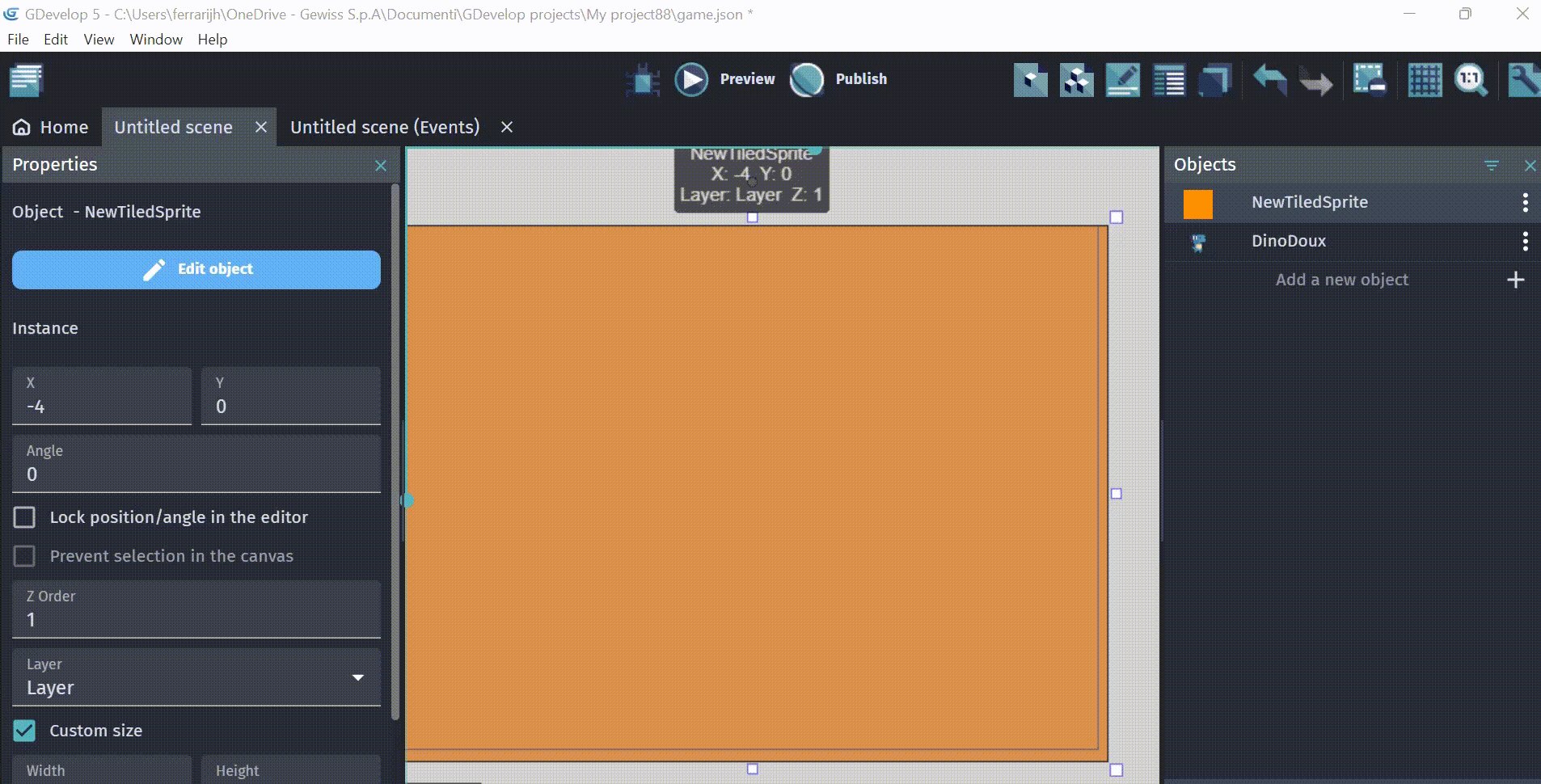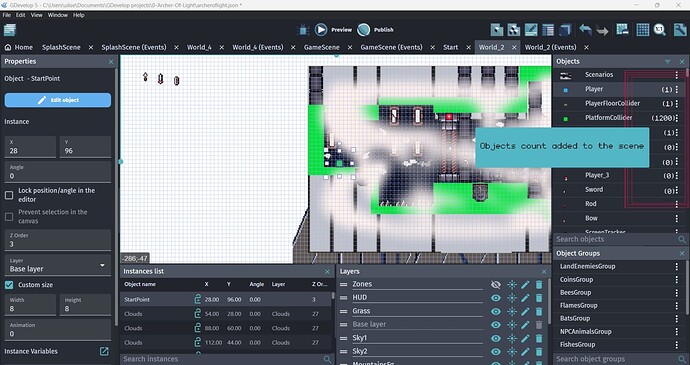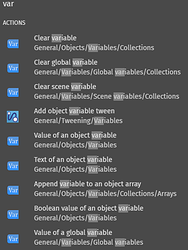Hi mates I was thinking if possiible to add a counter to check if the object is added to the scene
Hi Ulises!
Why do you want to see an object counter?
What is the issue that you think this UI indicator will solve for you?
Hello Luni,
In my case, sometimes I create an object. By default it is generated on Base Layer but if there are one or more highest levels,I can’t see the object and I’m not sure if there is generated or not.
Today I solve this situation checking the list of instances but if the objects are numerous it is inconvenient to click all of them all.
Thanks,
J
Hi J!
Thank you for answering.
So, what you’re saying is that the system places every new object on the base layer.
So, if that layer is covered by let’s say, a “background layer”, you won’t be able to see the new added object on the scene (because it’s under a background, on a background layer).
Did I understand correctly?
Yes

Hi, @jumpingj point is right, but what I requesting is other thing.
In my screenshot what I want is the whole instances added to the scene ignoring the layers.
Suppose you have an Object Player in Base Layer and other instance of the object Player in the layer Background so in your Objects panel you are going to see Player(2) just that.
Yes, sometimes it can be useful.
@Luni what do you think about making more things optional?
Suboptimal things like search-results-highlighting, the cursor coordinates at the bottom-left, the position bars at the left and at the top, etc. I never used it in the last 5 years.
Default ON, but a switch in the Preferences. If it’s not very difficult to implement, I think it would be really good for the user experience.
So the users can simply decide if they want to see the instance counter or it is unnecessary and disturbing for them.
Hi Ulises!
Thank you for your response.
I got that, but I wanted to know (just as JumpingJ explained his), what’s the interaction error that you’re trying to resolve with an object counter?
Hey @jack!
Thanks for your comment.
I am waiting for Ulises response, cause they might have a use case that I ignore. As for JumpingJ they do have a good point, but that’s a system error that can be resolved more elegantly (I think that the issue is in the system -which is placing the objects where the user cannot see them-, not on the object list), so the solution should be at the root of the problem. For now, the evidence is telling me that there is no need to make this optional, since the “real” issue is somewhere else.
As for making things optional, I am from the school of “why do we even have X in the first place?” before deciding to remove it or hide it from the interface.
There will always be things that we’ll like to remove of hide because we find it “useless”.
As a wild example: I never use the debugger, so I would gladly remove it, but there are users (a good number, I would say) that do. That’s just because depending of our mental models, we have different expectations and values that we’d like to know, or ignore.
So, following that train of thought users would like to hide or show completely different things from the interface, and implementing so would be unscalable in the long term: design and implementation would always have to ask things like “But what if the user hid the parameters X and Y position? How would they execute this task?”… So: yey for simplification, ney for anonymisation (I just made up that design motto, hehe).
That being said, you’d be happy to know that the scroll bars will be changed, and they will be hidden by default, and other things on the app will slowly evolve to reduce cognitive load on the working area. So some of the suboptimal things might not disappear, but get different, simplier interactions. ![]()
@Luni I’m at work right now when I come back to home I’m going to create a video to show you why I need this feature.
But why do we have preference switches for thumbnails in events, suggest variables, themes, positionable panels… You have to force them to use it like a contributor did it without a survey, because it’s just a mental expectations problem of users… If no one wants to implement it, okay, but let’s not say it doesn’t make sense ![]()
Other engines, graphics tools, 3D, video editing,… all offer customizable interfaces and are proud of it.
I’ve waited a few months, but it still doesn’t make sense that the word I typed a second ago is being highlighted. Even if the contrast would not bad with this theme, it makes it harder to find the desired action/condition.
To the topic, if an instance is on a hidden layer or has a transparent img as first animation or is very small, could also be reasons for an instance counter. It also sometimes happens that instances are copied exactly one the other with a shortcut, instead of being marked and moved, causing problems and being difficult to find. I personally see more important things than that, but why not.
Those are fair points.
The switchers on preferences that you see today were made in the past, and some of those choices were made because of a lack of ressources at that time.
I totally agree that to commit and implement something, usability testing and research must be made. And for testing; resources (testers, interviewers, research plan, data analysis…) and time are required.
So, doing that “quick fix” of personalisation switchers because the time for testing wasn’t enough, at the end won’t resolve the root problem (which might be somewhere else). I do think that some things can me personalised, but not all of them (that’s actually my issue with the interfaces that I tried during university -like Adobe, Autocad or even Maya-… just too many choices).
You’re right. It can be implemented, but I stand by saying that little personalisations are necessary.
As for the waiting time. I am sorry that it’s taking so long. As you can imagine, features and user feedback accumulated all these years, and today we finally have someone that can read, tag, and “group” similar usability issues in order to address them.
I’ve read your concern regarding the search highlight. I would appreciate if you left a comment on its specific topic either here or here so I can eventually contact the concerned users for interviewing or usability testing. ![]()
Hi!
Regarding the instances count per object, I’d just like to mention: We just added an item in the context menu when right-clicking on an object that is “Select all instances on scene (X)” that mentions the count of instances present in the scene.
I know that’s not what you’re asking but it could turn out to be useful to your use-case.
For me this is enough

